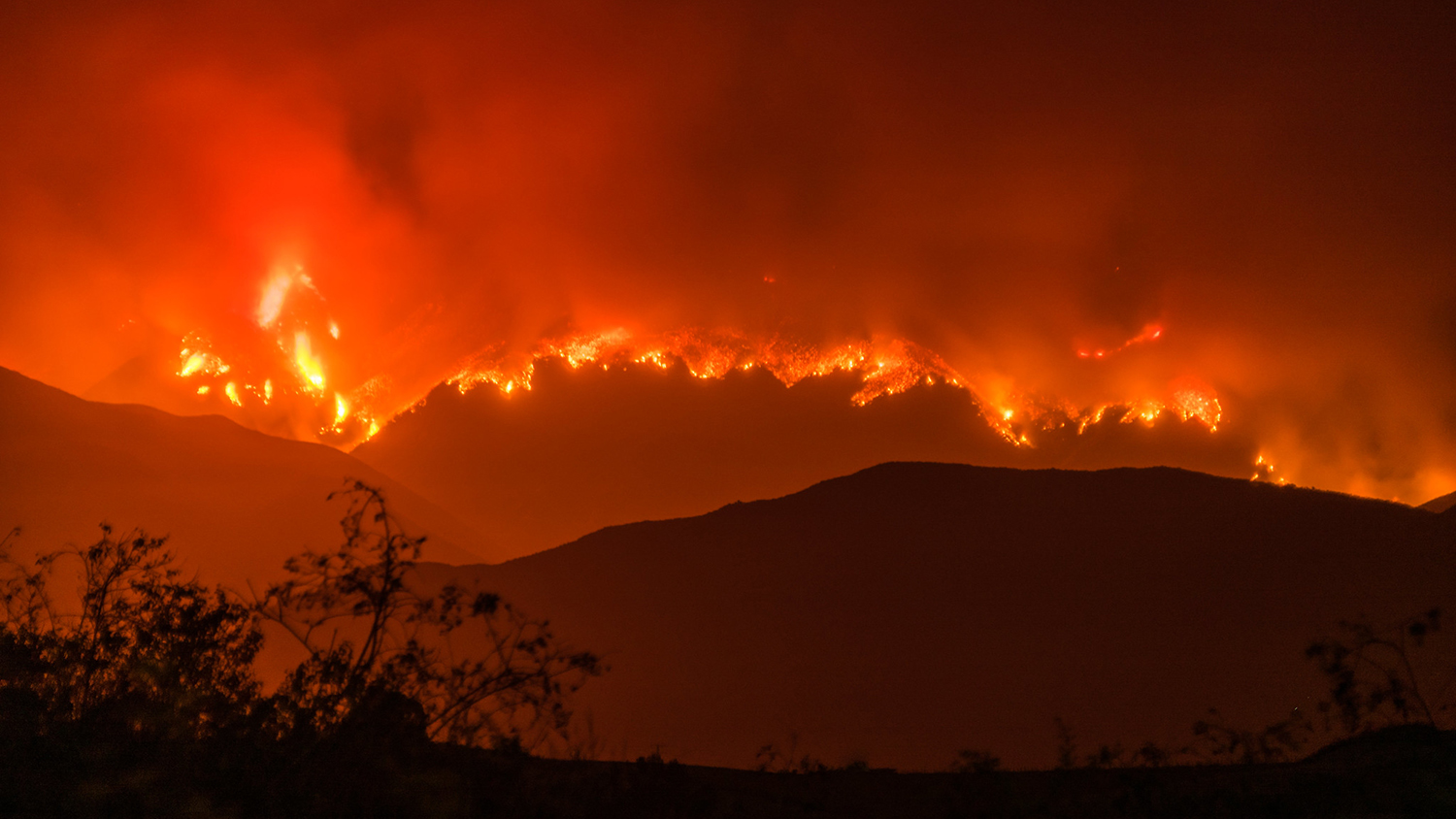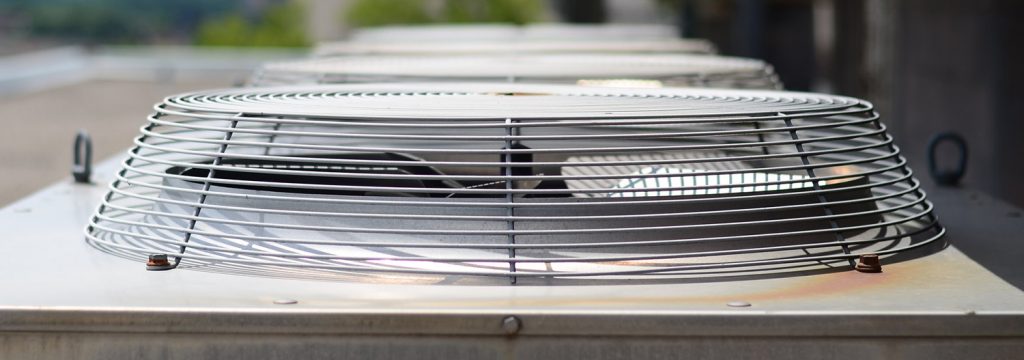Fire, Air Conditioning and Where We Get Our Power

Editor’s Note: This is a guest post by Jeremiah Johnson, an associate professor of environmental engineering at NC State whose work focuses on energy systems and policy. This post is part of a series highlighting ways that NC State is helping us understand, mitigate and prepare for the impacts of climate change.
Most Americans alive today don’t know what it’s like to live without access to reliable electricity. While we take this service for granted, a glimpse at the news from California highlights the new challenges a changing climate presents to the safe and reliable operation of the power grid.
Climate change is playing a role in increasing risks from wildfires, increasing peak electricity demand to power our air conditioners, and reducing the capabilities of existing power plants. While grappling with these climate-induced challenges, the power sector is also leading the way when it comes to reducing greenhouse gas emissions, substituting coal generation with less-polluting natural gas and carbon-free, renewable sources of energy. However, given the size and complexity of our energy system, efforts to modernize the power sector face formidable challenges.
California residents have experienced periodic blackouts as Pacific Gas & Electric (PG&E) seeks to reduce risks of catastrophic wildfires stemming from its transmission system – and can expect these rolling blackouts to continue for the next decade. While PG&E is receiving rightful criticism for inadequate infrastructure planning and vegetation management, climate change is making fire prevention for utilities harder. A warming atmosphere leads to drier trees and shrubs, creating the conditions for more frequent and dangerous wildfires. Modernizing this infrastructure – for example, burying the power lines – can be extremely expensive and time consuming.
On top of these risks, a changing climate is already impacting how we consume electricity.

More frequent and extreme hot days mean that more people are using air conditioners more often. In the Southeast, air conditioner use already makes up more than one-quarter of household energy use. We design our power system to meet peak demand and, in many regions, that peak occurs on a hot summer day, driven by air conditioners. More air conditioners and more extreme heat waves mean that we’ll need more power plants to carry us through these peak hours.
For example, in the summer of 2019, the Texas grid smashed peak electricity demand records as Texans cranked up their air conditioners to escape from a prolonged heat wave. Grid observers breathed a sigh of relief as the available power generation proved to be sufficient to meet the demand, but challenges in ensuring adequate power generation capacity persist. One study found that summer electric loads may increase by 15% due to climate change, which would require massive investment in new power generation infrastructure.
Climate change also impacts the functionality of existing power plants. It is forecasted that worldwide thermoelectric power plants – such as coal- and gas-fired units – will see a reduction in usable capacity of 5% in the coming decade, and up to 19% in the future, due to climate-induced changes to water availability and water temperature (hot water doesn’t cool things down as well as cold water does).
You can’t talk about this subject without acknowledging that the power system is a key contributor to climate pollution. In 2017, electricity generation produced 28% of greenhouse gas emissions in the United States. However, in the past decade, we have seen a drop in greenhouse gas emissions from the power sector.
Here’s the fundamental challenge facing the power sector: electricity generation must match demand in real time.
In fact, U.S. greenhouse gas emissions from electricity have dropped by more than 25% since peaking in 2007. These emission reductions are due in large part to coal generation being displaced by natural gas, wind, and, increasingly, solar power. This rapidly changing power system presents new operational challenges, which are being explored and addressed by researchers at NC State, through the university’s Energy Collaborative and the Chancellor’s Faculty Excellence Program in Sustainable Energy Systems & Policy.
Here’s the fundamental challenge facing the power sector: electricity generation must match demand in real time. But wind and solar power, which provided a bit over 9% of utility-scale electricity generation in 2019, vary their production daily and seasonally. This requires the remaining sources of electricity to provide the flexibility to match generation with demand. When only a small fraction of power generation comes from renewable sources, this is relatively easy, but when the share of wind or solar gets high enough, balancing generation and demand can prove challenging.
Grid-scale energy storage is one solution to this problem. NC State researchers recently completed a major study examining the potential costs and benefits of energy storage on the North Carolina grid. In this work, we showed that the rapid decline in the cost of grid-scale batteries may very well make such technologies more cost effective than new power plants within the next 10 years. In fact, California’s most recent long-term planning documents envision at least 11 gigawatts of batteries – a staggeringly large number.
These rapidly dropping battery costs are particularly important given the need for new capacity to replace coal plant retirements and the potential for higher peak electricity demand driven by increasing air conditioner loads.

Power plants and grid-scale batteries are not the only options to help integrate wind and solar power; altering customer demand in real time can also help.
As part of a multi-university Department of Energy project, NC State researchers are investigating the potential for commercial buildings to adjust their power demand for space cooling to match the needs of the power system.
To do this, we can slightly shift the timing when we use our space cooling in a manner that doesn’t result in a perceptible change in comfort. Aggregated over many buildings, this can result in major shifts in power consumption at times when we want more or less demand.
Such “demand response” programs are already being rolled out by many utilities, but their capabilities and impacts are not fully understood. Through experiments across 20 buildings, our research will help us understand how to efficiently and effectively use buildings to help integrate renewables and manage the power grid.
So, while there are challenges ahead, technological advances and more favorable economics for clean energy technologies give me cause for optimism. We’re hoping that our research can help us continue, and possibly accelerate, this progress.


